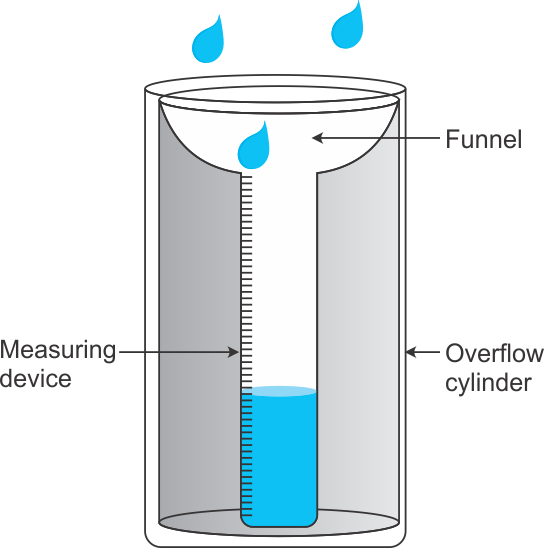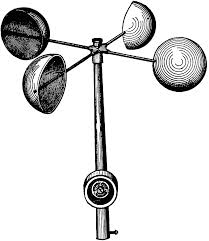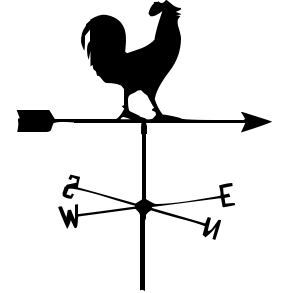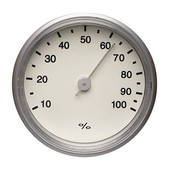Q1. Does the amount of humidity change in the same day?
Solution
Yes, the amount of humidity changes in the same day because as the temperature increases the rate of evaporation increases and vice versa.
Q2. Weather is average atmospheric conditions of a for a long time.
Solution
False
Weather is the day to day condition while the average atmospheric conditions of a for a long time is the climate of that place.
Q3. How can you prepare your own rain gauge?
Solution
Fix a scale to a cylindrical jar and a funnel at its top .This graduated cylinder will act as rain gauge. 

Q4. Why weather reports in news papers show maximum and minimum temperatures?
Solution
Due to heat of sun, temperature during the day increases and becomes maximum at noon and during night it falls and become minimum at the time of dawn.
Q5. Hygrometer is a graduated cylinder with a funnel.
Solution
False
The rain gauge is a graduated cylinder with a funnel.
Q6. If the humidity of a place is less then
Solution
The rate of evaporation at a given place is always dependent on the humidity of that place. If the air has less water vapour, then it can still hold excess vapour and therefore, evaporation will occur at a faster rate.
Q7. Which of the following devices is used to measure wind speed?
Solution
A device called anemometer is used to measure wind speed and wind pressure.


Q8. The amount of rain received is measured in
Solution
Rainfall at a place is measured in millimetres.
Q9. _____________ consists of graduated cylinder with funnel.
Solution
Rain gauge consists of graduated cylinder with funnel.
Q10. Atmospheric conditions of a day are known as weather.
Solution
True
Q11. Why the days are shorter in winter than in summer?
Solution
During summer, sunrise is early and the sunset is late. Due to this, days are longer in summers and nights are shorter. On the other hand, during winter the sunrise is late but the sunset is early. Due to this, days are shorter in winter but the nights are longer.
Q12. Why mangroves are found in coastal region?
Solution
Mangrooves are able to survive in salty water so they are found in coastal regions.
Q13. Which of the following animals are not adapted to live on the trees?
Solution
Big cats including lions and tigers are adapted to live on the land.
Q14. Study of weather is known as meteorology.
Solution
True
Q15. Average weather conditions of a place is known as_____________.
Solution
Average weather conditions of a place is known as climate.
Q16. Which of the following devices is used to collect and measure rainfall?
Solution
Rain gauge is a device used to collect and measure rainfall at a place.
Q17. Temperature remains constant throughout the day.
Solution
False
The temperature of a place keeps changing according to the time.
Q18. Why Mumbai receives high rainfall than Pune?
Solution
Mumbai is situated at windward side of western Ghats and Pune is situated at leeward side. So, Mumbai receives high rainfall.
Q19. Climate affects the vegetation of a place.
Solution
True
Q20. Humidity is measured by Rain gauge.
Solution
False
Rainfall is measured by Rain guage.
Q21. Why mosses are best suited for polar regions?
Solution
Mosses are short lived flowering plants. They complete their life cycle in short summer period. So they are well suited for polar regions.
Q22. Unit of measuring rain fall is _____________.
Solution
Unit of measuring rain fall is mm.
Q23. Why evergreen forests are found in equatorial region?
Solution
Equatorial region has hot and wet climate which is good for growth of various types of plants and animals.
Q24. Why nights are foggy during winters?
Solution
In winters when temperature falls after sunset, water vapour condenses near the ground .The droplets hanging in the air form fog so, nights are foggy in winters.
Q25. Why deciduous trees shed their leaves during autumn season?
Solution
Deciduous trees grow in tropical regions during autumn season. As there is shortage of water so to cope up with this condition they shed their leaves.
Q26. How have polar bears adapted to the polar regions?
Solution
Polar bears have
white fur which protects them from predators and helps them catch their prey
as they are not easily visible.
They go
swimming on warm days to cool off. Their wide and large paws help them swim
well and walk with ease in snow.
They can remain
underwater for a long time as they can close their nostrils to prevent the
entry of water.
They have a
strong sense of smell which helps them to hunt their food.
They have two
layers of fur and a thick layer of fat which protects them from the cold and
keeps them warm.



Comments
Post a Comment